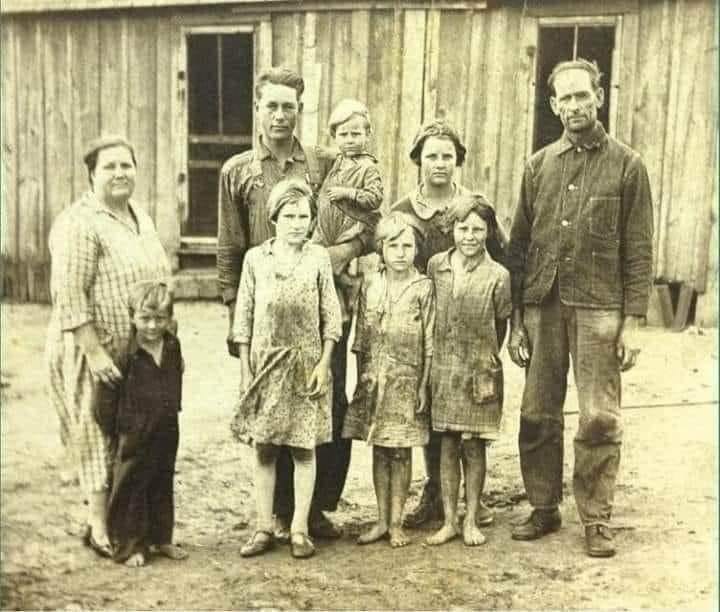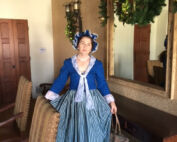As a result of taking their yearly bath in May and still smelling very decent by June, the majority of people got married in June. But to cover up the body odor, brides carried a bouquet since they were beginning to smell. Thus, it is customary to hold a bouquet at a marriage ceremony today.
Baths consisted of a big tub filled with hot water. The man of the house had the privilege of the nice clean water, then all the other sons and men, then the women, and finally the children. Last of all the babies. By then the water was so dirty you could lose someone in it … hence the saying, “Don’t throw the baby out with the Bath water!”
There was no wood beneath the huge stacks of straw-thatched roofs on the houses. All of the cats and other small creatures (mice, bugs) lived under the roof because it was their sole source of warmth. The phrase “It’s raining cats and dogs” originated from the fact that when it rained, the ground got slick and occasionally the animals would slip and fall off the roof.
There was nothing to stop things from falling into the house. This posed a real problem in the bedroom where bugs and other droppings could mess up your nice clean bed, therefore, a bed with big posts and a sheet hung over the top afforded some protection. That’s how canopy beds came into existence.
The floor was dirt. Only the wealthy had something other than dirt, leading folks to coin the phrase “dirt poor.”
The wealthy had slate floors that would get slippery in the winter when wet, so they spread thresh (straw) on the floor to help keep their footing. As the winter wore on, they added more thresh until, when you opened the door, it would all start slipping outside. A piece of wood was placed in the entranceway, subsequently creating a “threshhold.”
Back then, a large kettle that was constantly hanging over the fire was used for cooking in the kitchen. They started the fire and added items to the pot each day. They consumed little meat and ate largely veggies. After eating the stew for evening, they would start over the following day by putting any leftovers in the pot to cool overnight. “Peas porridge hot, peas porridge cold, peas porridge in the pot nine days old” is a rhyme that refers to the fact that stew occasionally contained food that had been there for a long period.
Sometimes they could obtain pork, which made them feel quite special. When visitors came over, they would hang up their bacon to show off. It was a sign of wealth that a man could, “bring home the bacon.” They would cut off a little to share with guests and would all sit around and “chew the fat.”
Those with money had plates made of pewter. Food with high acid content caused some of the lead to leach onto the food, causing lead poisoning and death. This happened most often with tomatoes, so for the next 400 years or so, tomatoes were considered poisonous.
Bread was divided according to status. Workers got the burnt bottom of the loaf, the family got the middle, and guests got the top, or the “upper crust.”
Lead cups were used to drink ale or whisky. The combination would sometimes knock the imbibers out for a couple of days. Someone walking along the road would take them for dead and prepare them for burial.. They were laid out on the kitchen table for a couple of days and the family would gather around and eat and drink and wait and see if they would wake up, creating the custom of holding a wake.
Families would gather their urine in a pot, and once a day, it would be collected and sold to the tannery in order to tan animal skins. You were “piss poor” if you had to do this in order to exist.
Worse than that, though, were the really impoverished people who were unable to even purchase a pot; these people were the lowest of the lowest and “didn’t have a pot to piss in.”
The next time you are washing your hands & complain because the water temperature isn’t just how you like it, think about how things used to be. Here are some facts about the 1500s.
England is old and small and the local folks started running out of places to bury people. So they would dig up coffins and would take the bones to a bone-house, and reuse the grave. When reopening these coffins, 1 out of 25 coffins were found to have scratch marks on the inside and they realized they had been burying people alive, so they would tie a string on the wrist of the corpse, lead it through the coffin and up through the ground and tie it to a bell. Someone would have to sit out in the graveyard all night (the graveyard shift.) to listen for the bell; thus, someone could be, saved by the bell or was considered a dead ringer.
That is what’s true, too. Who said history was boring, right now?

Join WeTheKids Now for More!










